Video Feature & Web-Exclusive Interview
Musician: DAVID BENOIT
Video: “A Midnight Rendezvous”
DAVID BENOIT IS AT THE TOP OF HIS GAME
WITH RELEASE OF NEW ALBUM A MIDNIGHT RENDEZVOUS
by Rodeo Marie Hanson
Pianist, composer, and arranger are some of the hats David Benoit has donned during several decades in the music business. Benoit’s unique style of smooth jazz has earned him three Grammy nominations and top jazz chart positions on Billboard. He has also made the leap to the big screen, scoring movies for people like Clint Eastwood and Sally Field.
Grey hair, glasses and a soft-spoken gentlemanly manner, Benoit embodies the image often associated with that of a maestro. Although he is a virtuoso, Benoit possesses a warm, welcoming manner and youthful persona. A grainy black and white photo on his website shows the artist at the piano. Even though he is just a child in the candid shot, his talent seems to radiate from the photo predicting future greatness. Another picture of the multi-Grammy nominee on the website features a grown-up Benoit sporting a t-shirt, jeans and sneakers. The line between past and present is drawn which suggests this musician still retains that inner-child and it, much like his talent, has been nurtured.
As timeless and inevitable as starlight, David Benoit’s A Midnight Rendezvous shines in all the right places of the heart. This collection is the penultimate expression of smooth jazz by the master himself.
Most musicians reference the Beatles on The Ed Sullivan Show back in February 1964 as a defining moment which beckoned them to pick up an instrument. Benoit’s choice to pursue music came the following year in 1965, with the help of Charlie Brown on television and Vince Guaraldi, whom he cites as an influence. The animated jazz piano trio captivated Benoit and propelled him to follow in Guaraldi’s steps. Taking piano lessons at the age of 13, Benoit would grow up to carve out his own trail as a composer, and participate in the 2015 feature film The Peanuts Movie, performing the song “Linus and Lucy.”
Before the record release party at Herb Alpert’s Vibrato Grill & Jazz for Benoit’s latest release A Midnight Rendezvous, the multi-faceted artist sat down with M Music & Musicians magazine to talk about his new album, the creative process, benefits of recording in the era of COVID-19 and advice for anyone pursuing music as a profession.
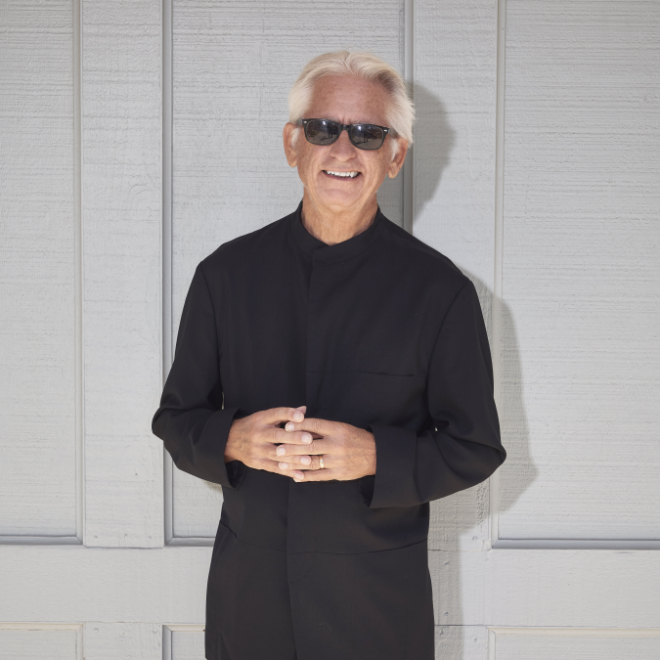
A Midnight Rendezvous is stellar and recalls 1980s era David Benoit, especially the title cut “A Midnight Rendezvous” and “Long Journey Home.” The album is a collage of piano, jazz and big band songs lovingly assembled to provide an intimate glimpse of the artist. This album exudes quality, sophistication and a playful attitude, and Benoit shared the back-story of how the project evolved.
“Originally,” Benoit says, “I had it in my mind to do a full big band album because I wanted to do something different. I didn’t want to just put out another smooth jazz album. I talked with Bud Harner, my manager, who said Shanachie [Entertainment] is interested in doing another record with you. I thought—well if they’re willing to come up with a budget, which they were, then why not! With the album budget they were willing to give, I was able to do these big band tracks and put a few on the album to see how they sound—see what kind of reaction I’d get. So we did the more smooth jazz contemporary stuff. We went into the studio for two days, plus we were able to get the big band in there and get it all done. I was very fortunate to get the great players and present these new big band tracks along with the more familiar type material.”
David Benoit is at the top of his game on new instrumental release A Midnight Rendezvous: a collage of piano, jazz and big band songs lovingly assembled to provide an intimate glimpse of the artist.
Enlisting Eric Marienthal, Jeff Lorber, Pat Kelley, Roberto Vally, John “JR” Robinson, Luis Conte, Wayne Bergeron, Justin Klunk, Dan Schnelle and a cast of other stellar musicians, Benoit says, “It was all about calling Eric Marienthal. I got lucky. This is where COVID-19 kind of was my friend. These guys were ready to get back into the studio. I had a window between Delta and Omicron, and we recorded these tracks. I was so lucky.”
How did you approach A Midnight Rendezvous album differently from your solo album?
The Steinway Records recording was actually my first solo piano album. I’m more used to tracking dates and getting in with a rhythm section. That Steinway album was more challenging because there was nowhere to hide. Where’s the bass player? Oh, I’m the bass player—and the drummer—which presented its unique set of challenges. Going back to what I’m comfortable with, having a really great rhythm section, like John “JR” Robinson (drums) and Roberto Vally (bass), I’m in my comfort zone.
Were the big band tracks also comfortable?
I was actually a little out of my comfort zone with the big band thing, which I really haven’t done much of. A lot of prep time went into that—because I only had four hours to record the whole thing. It’s got to be really swinging and really together. There’s no room for error because we just didn’t have the budget for it. (Laughs) I had the time because of COVID, so there strangely was a nice silver lining in the dark cloud of the pandemic.
Was there a goal in mind when you set out to do this project?
It was a call from the producer saying let’s go into the studio—here’s a budget. I need the master by this time and I need the album out by this time. That was our goal. (Laughs) I’d been writing during the pandemic and stockpiling tunes but there’s nothing like getting an actual budget and deadline—now we’re going to rock and roll. It definitely helped having that call from Danny Weiss [Shanachie] to say let’s do it.
Pat Kelley’s acoustic guitar is spectacularly impressive on “A Midnight Rendezvous.” You both, along with Robinson and Vally, keep that song moving with such precision. Is that part of the magic that happens when you all get together or is it something you’ve written?
That was an interesting situation. I wrote everything out pretty specifically and we tracked it with John Robinson and Roberto Vally. I wanted Pat to add some electric guitar wah-wah stuff to make it funky. He heard it and wanted to play acoustic guitar and do something very different than I expected. When he sent it back to me, I said wow! I heard his acoustic guitar, really fell in love with it and then redid some of my piano to match his guitar.
Who wrote that incredible bass groove on “Long Journey Home”?
Roberto came up with that. He’s the co-writer on that song. He’s a very creative player and we’ve gotten to be good friends. It was a lot of fun to work with Roberto.
You’ve previously said that it’s difficult to come up with a song title.
It’s easier to write the song than come up with the title. (Laughs) I always try to find interesting titles that are evocative. The original title was titled “Midnight Stroll” but it was already taken by a recent jazz recording. I was looking for something a little more evocative, so we came up with “A Midnight Rendezvous.” One of the reviewers in Hermosa Beach made a comment: ‘What were you doing up at midnight?’ I joked and said, ‘Are you kidding? I was in bed by 9.’ Ah—these days are different times than the old days.
You put a cool jazz stamp on Maren Morris’ country song “The Bones” and “Cabin Fever” captures the mood of the world lockdown, with the percussive beat that echoes someone’s footsteps pacing back and forth and the brass instruments whirring about embodying restlessness. What was your motivation to write “Cabin Fever”?
“Cabin Fever” was actually written a long time ago, back in 1989. It appeared on an album called Waiting for Spring [reached #1 on the Billboard jazz album charts]. It was about restlessness. It’s a funny coincidence that it is now about COVID. It was originally written about being in a cabin somewhere in the woods during the wintertime—just couldn’t wait for spring—getting cabin fever. There’s restlessness and energy to that track.
How did one of your big band tracks “Generations” come to you? Those parts are so intricate. The band goes in and out, comes down all the way and then pounds right at you.
This song took a long time to write. It did not come easily. I originally conceived it as a small group piece. I remembered times I played with Dave Brubeck. We had a younger player named Taylor Eigsti, so we were calling it “The Three Generations.” I thought about the three generations of jazz: the saxes are one generation, the trumpets are another and then there’s the piano. You hear them having a dialogue where they’re answering back and forth. I thought this might make a very cool big band tune. A lot of time went into figuring out how to make the odd time work—and then the dynamics too. When I put a lot of time into something, I sometimes wonder if people will only notice the radio play stuff or are they going to pay attention to the other tracks—that wind up taking a lot of time and care. So, thank you for noticing.
Tell us about scoring films, how it differs from recording studio albums, and what it was like to work on The Stars Fell on Henrietta—produced by Clint Eastwood, a jazz enthusiast, pianist and composer.
It’s a different discipline. I had the pleasure of scoring one of Clint’s films and he’s very hands- on, even though he didn’t act in the film. He produced The Stars Fell on Henrietta [1995] and he was there for the recording sessions and a lot of the meetings. The thing with films you have to understand is—you’ve got to leave your ego at the door. You’re writing for someone else—trying to create and support their vision. I was so new to film scoring, the director didn’t always like everything that I came up with—and that was a hard pill to swallow. I had to rewrite a few times and finally he was happy with what I did. I had a great relationship working with Sally [Field] on The Christmas Tree [1996]. It was her directorial debut—so that was great. With TV/ film, you’re servicing the client, you’re not servicing yourself. It’s really all about what they want, what their vision is, and how you can best put that together.
You’re known for live recording sessions—minimizing overdubs and edits. That organic process shines on This Side Up, which reached #4 on the Billboard Jazz Charts. What are the challenges of recording live without a net?
It has to do with being really prepared—a lot of time and practice goes into it before you actually have the session. I was watching the recent documentary about the Beatles [The Beatles: Get Back], watching the 8-track tape machine, the control room, the cables and George Harrison tripping over some wires—the human element of that process was just fascinating. I’ve never tried to walk into a studio and create a record inside the studio—I could never afford to. So I’ve had to do is a lot of preparation. By the time I get into the studio, there’s not a lot of room for errors. When I do a take on piano, I always feel my best takes are usually the first and second takes. I don’t overthink things. A lot of people overthink and spend hours until it’s totally perfect. I don’t believe that much in perfection. I believe more in capturing the energy and a good feeling. It’s what I’ve always liked about the Beatles—that real human element. It’s not so slick and overproduced. It was so interesting seeing that documentary. Fascinating how they would make records.
You give back to the community by investing in young people with your involvement in the Pacific Vision Youth Symphony (and as guest educator with Mr. Holland’s Opus Foundation). Tell us about the importance of music education in public schools.
Music education is really, really important. The funding has gone away for music. A lot of the students in my orchestra aren’t necessarily going to become professional musicians but just playing an instrument is a great discipline. I was doing a rehearsal last Sunday and the kids were very polite and they listened. They put away all the chairs and tables and cleaned up after themselves. There’s a certain discipline about kids who play music. If we teach that in the schools early on, we’ll have better kids. It doesn’t mean they’re going to be professional musicians but just being able to know how to play an instrument, play in tune and work with others—is hugely important.
Justin Klunk’s soprano sax shines on “Floating,” “Long Journey Home” and “At Home.” Years back, he was in your orchestra and has now toured with Ariana Grande, Lindsey Stirling and others. How was it to see that unfold?
Justin started with our orchestra when he was 12 years old, just this little kid. What was interesting about Justin, and a lot of young players like him—he wasn’t a prodigy. At 12, he wasn’t the next John Coltrane. He was just a kid who wanted to learn the saxophone. He started at 12 and kept getting better and better. I helped get him into that program at USC, and he just blossomed. Sometimes it’s not the kids who are the prodigies; it’s the ones who are willing to work hard. I don’t see myself as a prodigy. I just love music and had a gift for it and worked at it. It was so nice to watch Justin grow. He was taking lessons from the sax player that was my regular guy in the band, Andy Suzuki, and now Justin is that regular guy. He’s in that chair now. He is officially my sax player. It’s so exciting to see these kids come through the orchestra and show promise, and watch them grow. It’s fantastic.
Jazz aficionados can catch your morning show on KKJZ 88.1 FM in Long Beach, California. How do you approach the role of radio show host and what is the most rewarding aspect of that gig?
I simply try to service the music, tell a story once in a while and have a sense of humor about the music. When I’m saying K-Jazz, I have a smile on my face. I make people feel good and feel welcome. The one thing I never want to do is make someone feel I’m above them or know more than they do. Some DJ’s come across that way—I know this and I know that. I’d rather come across as: ‘Hey, I’m your friend and I just want to turn you on to this really cool music—check it out.’ I’m there to service the music. That’s what has been rewarding. It’s a chance for me to stay in tune with all the new artists coming out in jazz. I’m able to keep up with that by presenting the new jazz artists. It’s been a fun 10 years.
Charlie Brown and The Peanuts Gang and the music of Vince Guaraldi have been important to you. Why does the music from the Charlie Brown series seem to find new generations of fans? What makes Vince Guaraldi’s compositions so endearing?
It’s a combination of his abilities. He was a very intelligent piano player. He never read music. He played by ear and really related to the average listener. He wasn’t one of those jazz cats who played so many notes that you didn’t understand anything he was doing. That’s the problem with a lot of jazz—it’s so elitist. But that wasn’t him. Vince was about coming up with a melody that made people smile. That’s what he was able to do even though he had all these chops as a great jazz pianist. He had that ability to write something catchy and simple. That’s the genius of simplicity. Genius isn’t writing a ton of notes. Genius is finding that one note or one little phrase that makes everyone go: Oh, I like that! It makes me feel good. That’s what Vince was able to do so well.
You were able to do that with many of your songs, including “Kei’s Song” from GRP’s 1987 Freedom at Midnight.
Thank you. “Kei’s Song” has kind of become my signature song. That is part of my sound—a certain melody that you can recognize right away. That’s important.
A Midnight Rendezvous is poised to generate more David Benoit standards. Listeners will be immersed from the fade-in of cymbals on the title track to lingering keys that end his songs. Big band selections “Generations” and “Cabin Fever” will transport the listener back to a time when orchestras ruled the world.
As someone who has been successful in the music industry with hit albums and multi-Grammy nominations, what advice can you offer someone who dreams of becoming a professional musician?
The main thing is finding your individual voice and being creative. There are so many people who want to get into this business. I have a lot of students and people I’ve mentored who are all trying to break in one way or another. The ones I see who do—those are the ones who are very persistent—they never give up. With music, you just don’t ever give up. Also, you have your own style, your own sound that nobody else has—and that’s very important. Anyone who wants to get into the business should definitely try to find their voice and go for it, and never give up.
Give us a sneak peek of the album release party Thursday, February 10, 2022 in Los Angeles at Herb Alpert’s Vibrato Grill & Jazz.
I just want everyone to have a really good time. Everyone’s going to get a little taste of the big band side of me. We’re actually doing “Beat Street” and another tune of mine “Café Rio,” and then we’re doing the Buddy Rich arrangement of “Mercy, Mercy, Mercy.” It’s really going to be swinging. Plus, we’ll open the evening with my small group—with Justin Klunk featured on sax, Dan Schnelle on drums and Roberto Vally on bass.
As timeless and inevitable as starlight, David Benoit’s A Midnight Rendezvous shines in all the right places of the heart. This collection is the penultimate expression of smooth jazz by the master himself and is poised to generate more Benoit standards. Listeners will be immersed from the fade-in of cymbals on the title track to the lingering keys that end his songs. Big band selections “Generations” and “Cabin Fever” will transport the listener back to a time when orchestras ruled the world. The cover of Dave Koz’s “You Make Me Smile” is reminiscent of a romantic comedy score—with big bold cinematic brushes, while “Waiting for Spring” uses water as a thematic element of redemption and rebirth. The bleak dreary winter is behind us and a sunny new horizon is within reach. The instrumental music here showcases Benoit’s diversity and competence with different genres. David Benoit is at the top of his game.
www.DavidBenoitMusic.com
www.Facebook.com/davidbenoitmusic
www.Instagram.com/official_davidbenoit
www.Twitter.com/dbmusic
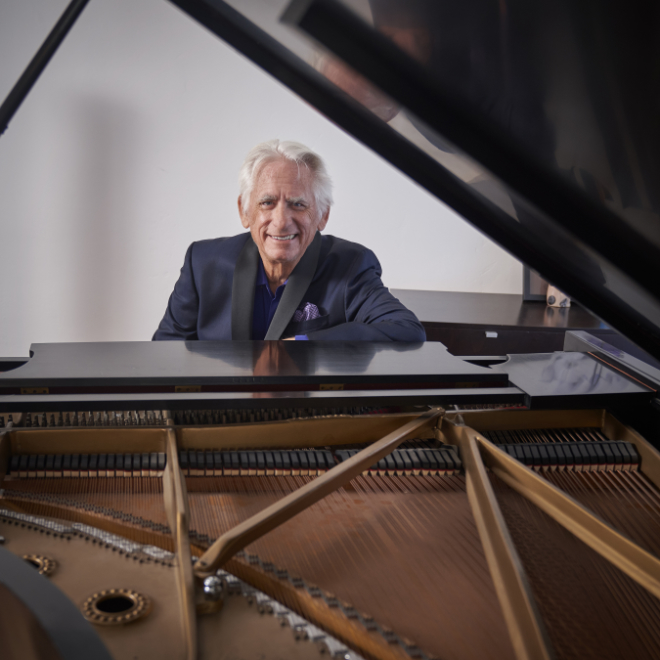
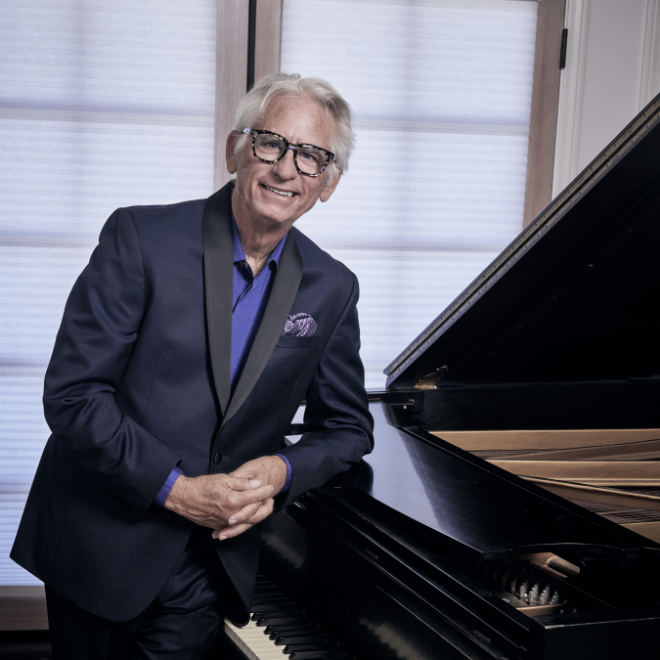

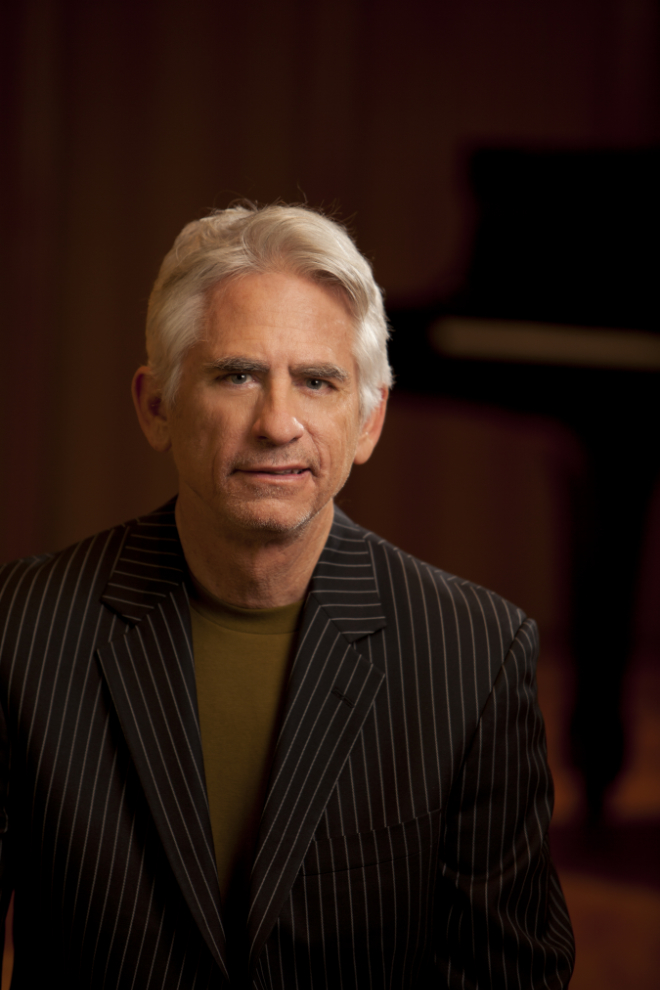
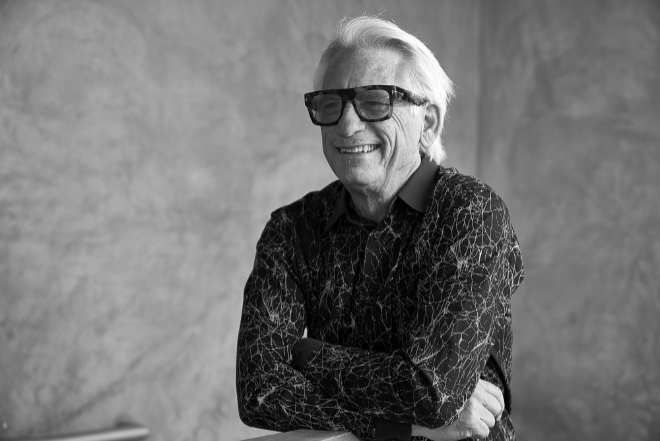

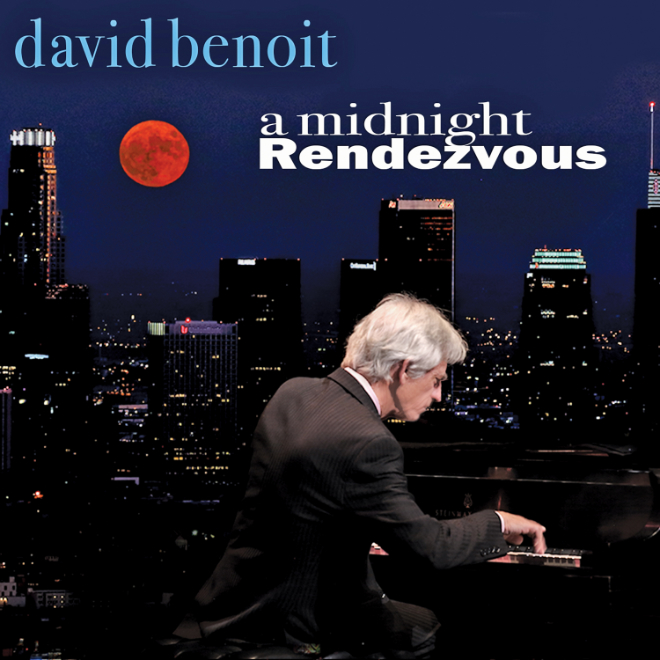



comment closed